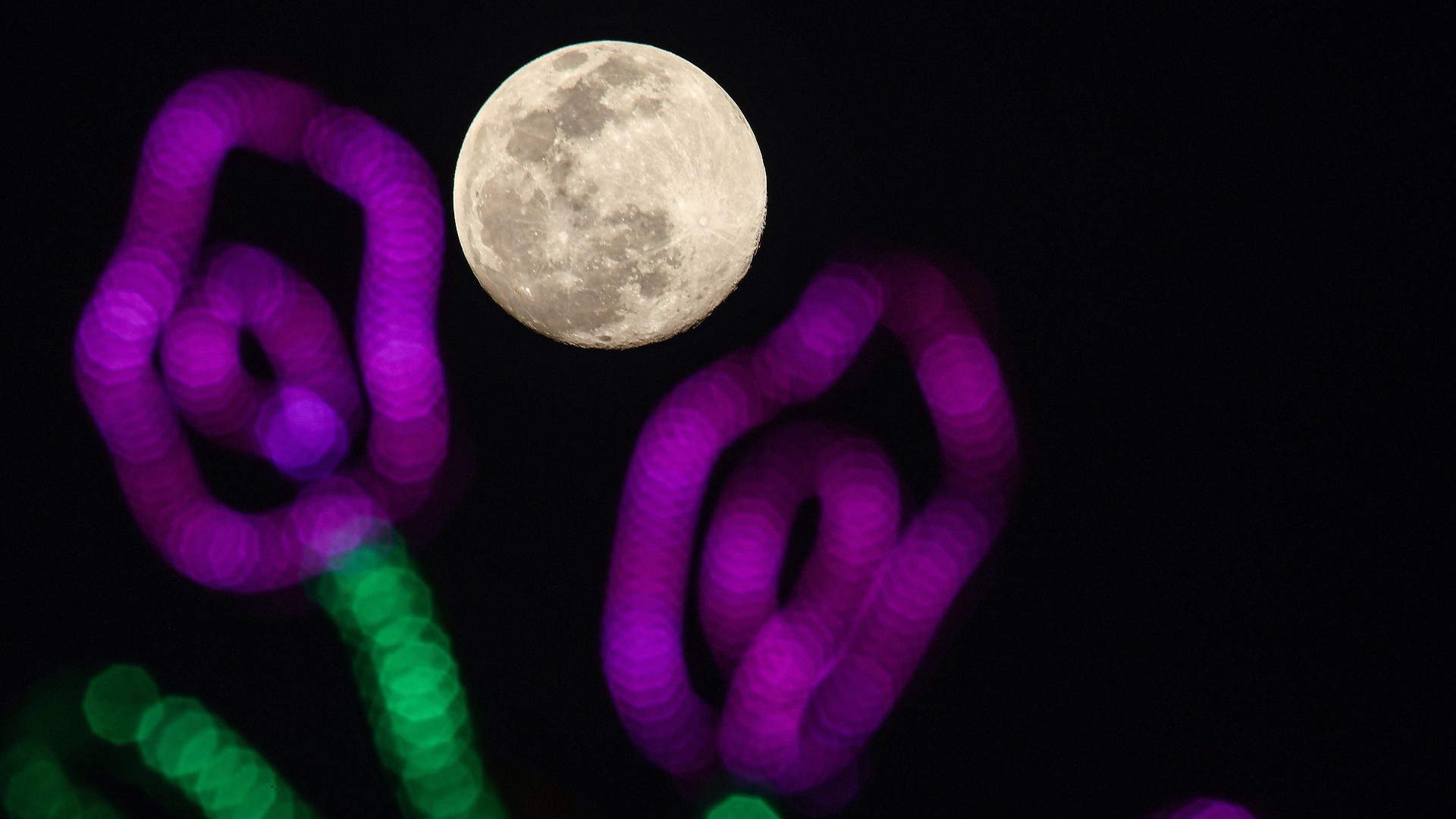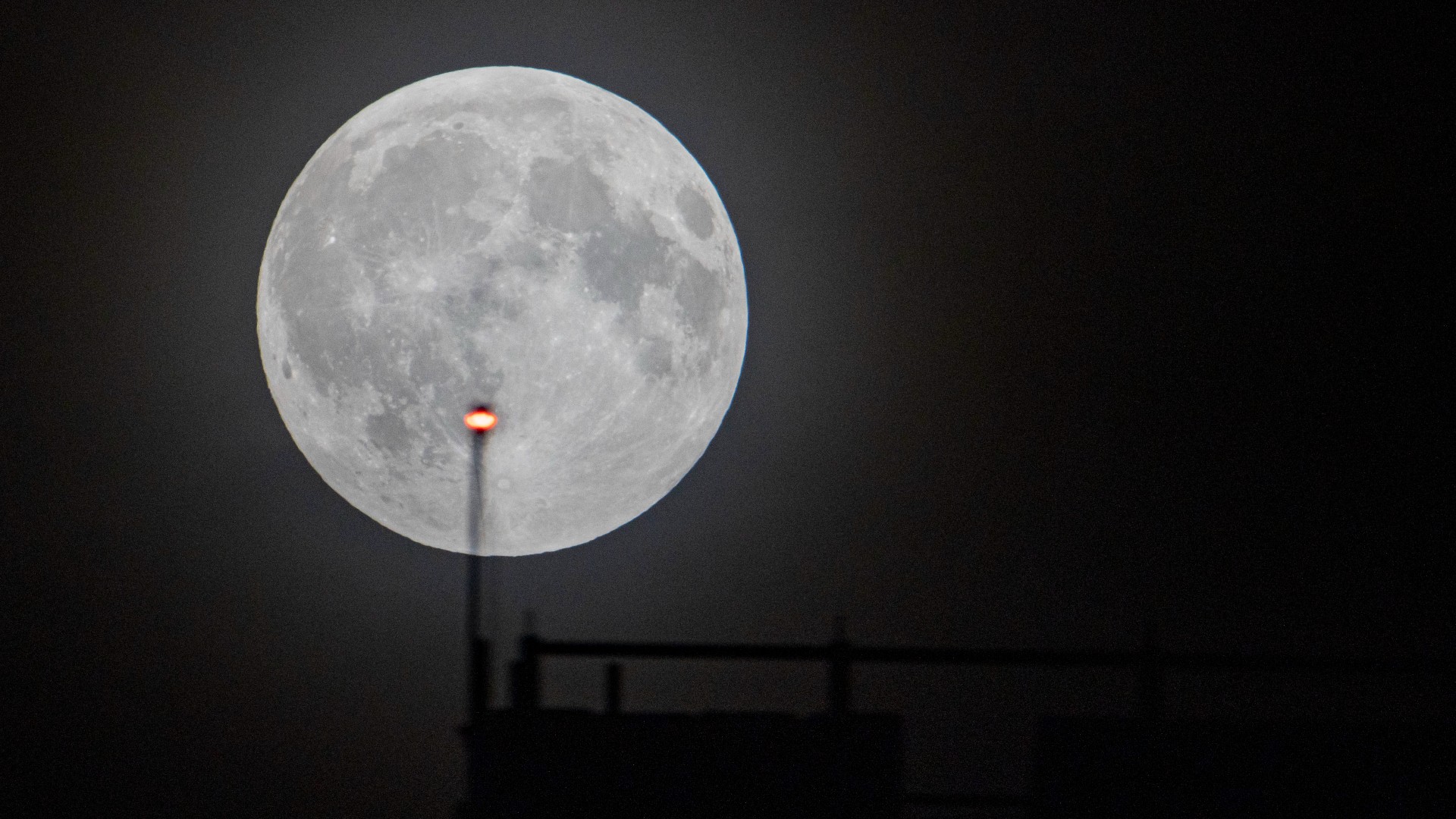May's Full Flower Moon rises tonight after a lunar eclipse
Friday will be an interesting day for moonwatchers.

May's full moon rises tonight (May 5), offering skywatchers the chance to experience the colorfully named "Flower Moon" of 2023.
During the full moon, the lunar face will be fully illuminated by the sun with the Flower Moon visible for most of the night across the globe from around sunset. From New York City, the Flower Moon will rise at around 6:59 p.m. EDT (2259 GMT) and will set at around 5:39 a.m. EDT (0939 GMT) the following morning. At the exact moment of the full moon around 1:36 a.m. EDT (0536 GMT) when it is 180 degrees from the line the sun traces in the sky, the Flower Moon will be in the Libra constellation, according to In the Sky.
Friday will be an interesting day for moonwatchers, as it also marks a penumbral lunar eclipse, though according to In the Sky this will not be visible from New York City as the moon will be below the horizon for the entire time the moon is in the shadow of the Earth.
While the lunar eclipse on May 5 will only be visible to the Eastern Hemisphere, you can still check it out in real-time thanks to a free livestream hosted by the Virtual Telescope Project.
Related: Full moon calendar 2023: When to see the next full moon
Penumbral eclipses happen when the Earth passes between the moon and the sun with the three celestial objects aligned with our planet in the middle. As a result, the shadow of our planet falls on the lunar face, obscuring it from the light of the sun.
During a penumbral eclipse, the moon only moves into the penumbra, the lighter outer region of the Earth's shadow, meaning our planet appears to obscure part of the sun's disk but not all of it. Thus, the moon receives some light but is slightly dimmed. The resulting effect can be so subtle that it is barely perceptible, sometimes only visible to people with very good eyesight or in carefully controlled photographs.
Get the Space.com Newsletter
Breaking space news, the latest updates on rocket launches, skywatching events and more!
The Flower Moon will, fortunately, be more conspicuous and visible beyond the regions of Earth that get to experience the penumbral eclipse.
The monthly full moons all receive specific monikers many of which come from Native American sources, according to Farmer's Almanac. The May full moon's title the Flower Moon relates to flowers spring forth across North America during the month of May.
Read more: Full moon names for 2023 (and how they came to be)

Farmer's Almanac writes that name has been attributed to the Algonquin peoples, a fact that the website adds has been confirmed by Christina Ruddy of The Algonquin Way Cultural Centre in Pikwakanagan, Ontario. In the Dakota tradition, May's full moon has a similarly floral name, the Month of Flowers, according to travelogues dating back to the 18th century.
Other names for the Flower Moon from Native American sources include the Cree names Budding Moon or Leaf Budding Moon and the Planting Moon from the Lakota, all of which highlight burgeoning flora during May. Other names for the full moon of May focus on fauna, with the Cree names the Egg Laying Moon and the Frog Moon, and the Oglala title the Moon of the Shedding Ponies being particularly striking examples that are taken from the effect the warming weather of spring has on wildlife.
If you are hoping to catch a look at the Flower Moon and don't have everything you need to get a close-up look at it, our guides to the best telescopes and best binoculars are a great place to start.
If you're looking to snap photos of the night sky in general, check out our guide on how to photograph the moon, as well as our best cameras for astrophotography and best lenses for astrophotography.
Editor's Note: If you snap an image of the Flower Moon, and would like to share it with Space.com's readers, send your photo(s), comments, and your name and location to spacephotos@space.com.
Join our Space Forums to keep talking space on the latest missions, night sky and more! And if you have a news tip, correction or comment, let us know at: community@space.com.

Robert Lea is a science journalist in the U.K. whose articles have been published in Physics World, New Scientist, Astronomy Magazine, All About Space, Newsweek and ZME Science. He also writes about science communication for Elsevier and the European Journal of Physics. Rob holds a bachelor of science degree in physics and astronomy from the U.K.’s Open University. Follow him on Twitter @sciencef1rst.









